Project Outcomes 2020-21
CIP Validation and Verification (2020-21)
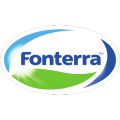
Project outcomes
Select the following heading to read more about the Project Brief
Description of the project:
Fonterra’s dairy processing facility at Darnum was established in 1997 as a state-of-the-art nutritional powder plant. The site currently manufactures a range of products for local and export markets to support growing families.
The site recently conducted a water mapping exercise at the site to identify water demand across various areas and components of the manufacturing process. Some gaps in data were found and Fonterra would like to implement a more detailed analysis of our Clean-In-Place systems and processes to identify opportunities for improvement.
The site uses an information system called Manufacturing Execution System (MES) to drive and monitor the manufacturing operations. The main goal of this system is to achieve and maintain high performance across the manufacturing environment. The CIP processes on site form a part of MES with performance tracked via control screens.
The project scope included the following tasks:
– Detailed training at the beginning of the project on CIP verification, validation, orientation
– Review the CIP control systems across 12 CIP kitchens and 155 individual circuits at the site
– Collect and evaluate CIP samples
– Create MES tags and MES CIP reporting tools
– Identify deviations from Fonterra’s FES130 Engineering Standard and develop a list of things to ‘fix’ in order to conform with the Std
Improving use of dairy factory waste streams and farm manure through solids and nutrient recovery (2020-21)
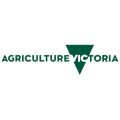
Project outcomes
Select the following heading to read more about the Project Brief
Description of the project
This 2020/2021 summer project is supported by Gardiner Foundation and builds on work previously undertaken by MITI students at Ellinbank. The aim of the project is to test the effectiveness of novel techniques for recovering nutrients from dairy factory waste streams and farm manure. High nutrient loads occur in post-collection (manure) and post-processing (wastewater) streams on dairy farms and in factories; which are an on-going challenge to manage, and which can lead to nutrient loss and greenhouse gas emissions. Coagulation/flocculation are some of the technologies used to reduce nutrient loads in traditional wastewater treatment facilities, through the separation of nutrients in solid fractions.
These technologies include the use of various synthetic polymeric compounds as well as inorganic and organic chemicals, some of which could have detrimental impacts when the separated solids are land applied. A variety of novel natural materials are also available that could be useful for nutrient recovery for post- and pre-farm gate dairy businesses. The students will be required to review and identify suitable options, to test selected options in the laboratory and to report on the efficacy and benefits of selected materials, and their impact on future use of treated waste streams and manure. Factory samples will be collected from processing plants local to the Ellinbank Dairy Centre, while manure from the research farm and other farms will be tested. As in previous years students will prepare a report describing the work undertaken, and their findings and recommendations for the dairy industry. They will also present their work to collaborating and other processors at the February Ellinbank Seminar.
Artificial Intelligence and Blockchain – Cow to Consumer in Cream Cheese (2020-21)
Hosted by Bega
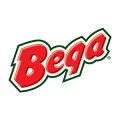
Project outcomes
Select the following heading to read more about the Project Brief
Description of the project:
Rapid changes in technology will have a significant impact on future dairy supply chains. This is relevant for manufacturing optimisation, the efficient flow of product through the supply chain and in the eyes of consumers who want to know more about the provenance and authenticity of products.
Bega operates a large cream cheese facility at our Tatura operations in Northern Victoria. This facility produces cream cheese in a variety of formats for sale in retail, food service and ingredient channels.
How can Bega apply AI and blockchain to provide a competitive advantage in the manufacture and marketing of cream cheese products?
Better Process for Improved Customer Service (2020-21)
Hosted by Burra Foods Australia
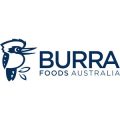
Project outcomes
Select the following heading to read more about the Project Brief
Description of the project:
The project will focus on analysing and developing a set of recommendations for improvements in the Burra Foods sales order process with an aim to improve the speed and accuracy of product delivery whilst maintaining and improving the level of service we offer to our customers. Students will look at the end to end process of Burra Foods sales order management system and document the process flow from sales order entry through to the delivery of product to our customers. After developing an understanding of the current process, the project will then focus on identifying areas for improvement that will benefit our business and the purchasing experience for our customers.
Water Mapping validation and development of a water saving roadmap (2020-21)
Hosted by Fonterra Australia Pty Ltd

Project outcomes
Select the following heading to read more about the Project Brief
Description of the project:
Fonterra’s dairy processing facility at Darnum was established in 1997 as a state-of-the-art nutritional powder plant. The site currently manufactures a range of nutritional powder products for local and export markets to support growing families. The site’s manufacturing operations are sometimes constrained by water flows due to site infrastructure set up. Furthermore, excess water usage also impacts the amount of wastewater generated by the factory that needs to be treated and managed.
The site recently conducted a water mapping exercise at the site to identify water demand sources across various areas and components of the manufacturing process. Approximately 20% of water consumed at the site could not be metered and Fonterra has been conducting further investigations to close this gap and identify opportunities across the site for saving and/or reusing water. A short list of 20 potential projects has been developed so far.
The project scope included the following tasks:
– Conduct a water balance across the site and identify any missing metering requirements
– Validate the water mapping outcomes
– Review and finalise a list of water saving, water reuse and water storage projects
– Develop capital costings, talk to suppliers, and validate water savings versus cost on projects
– Identify and implement water saving projects if possible within the timeframe
On-Farm Milk Sensor Project (2020-21)
Hosted by Lactalis Australia
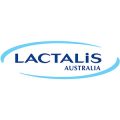
Project outcomes
Select the following heading to read more about the Project Brief
Description of the project:
The Australian dairy industry is about to embark on a step forward in electronic monitoring on dairy farms. The areas to be monitored include milk temperature as a primary focus and vat volumes. Secondly new electronics in the dairy can be used to monitor the vat cleaning program, provide agitator control and other parameters.
Lactalis Australia has just under 500 farms that need to have the milk cooled to less than 5 °C within 2 hours and 20 minutes of the end of milking. It would be easy to develop a milk monitoring system using one of the current products on the market but if a farmer changes processors after installing the equipment or Lactalis change carriers the data may not be compatible with the new partner. There needs to be a common approach for the industry.
